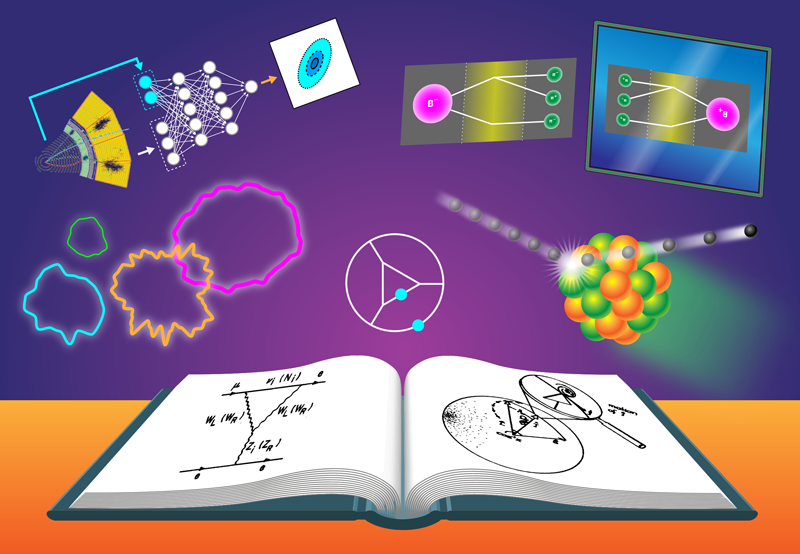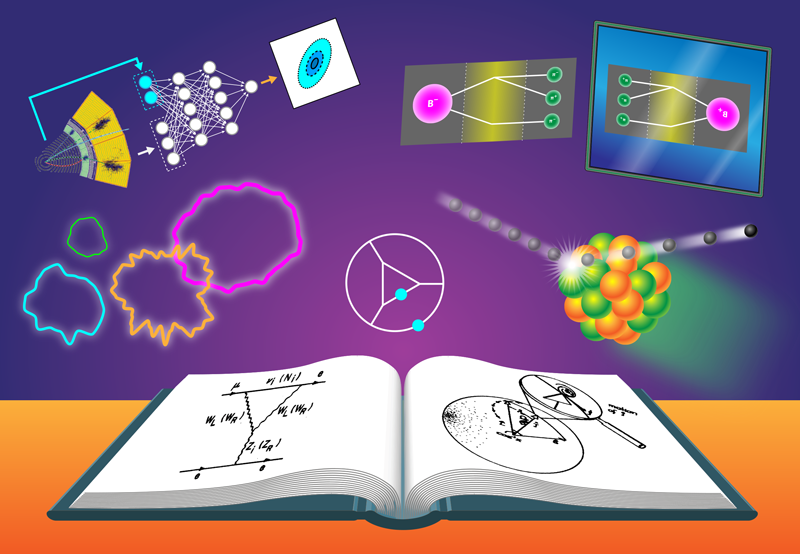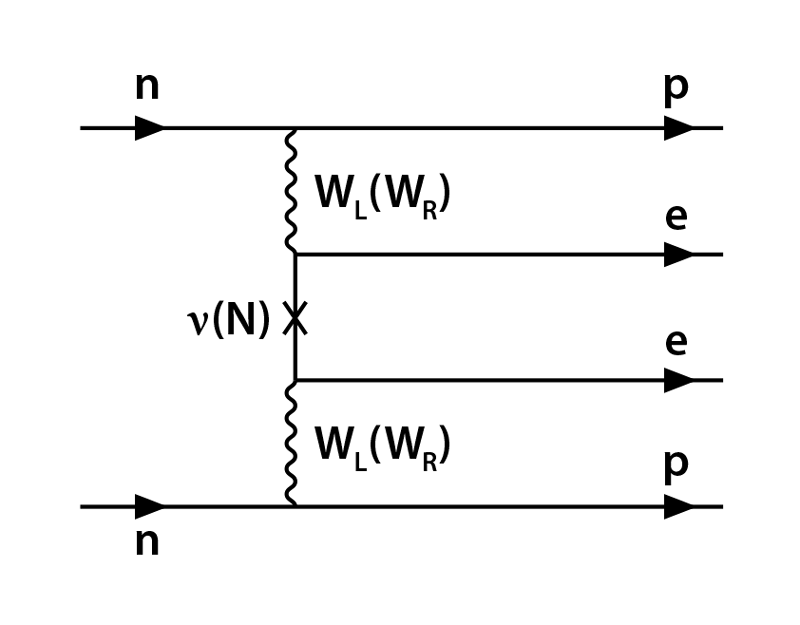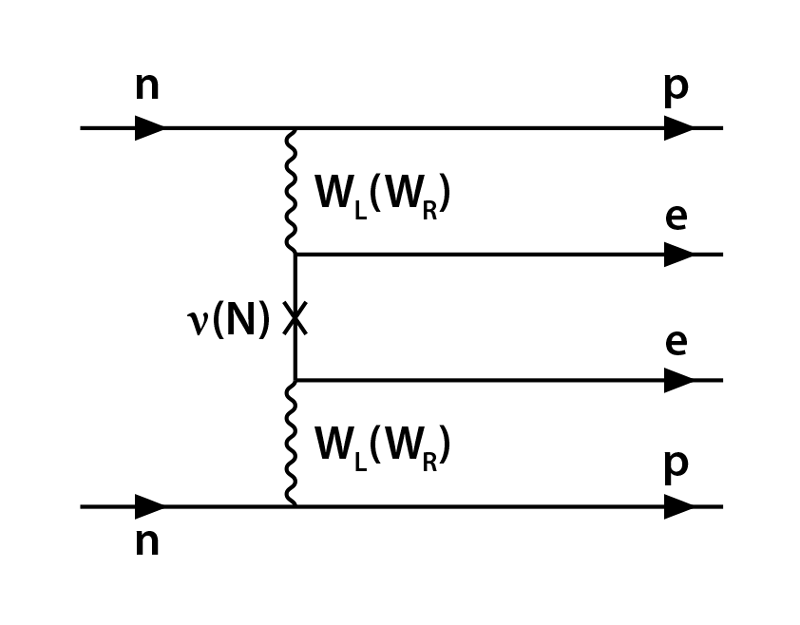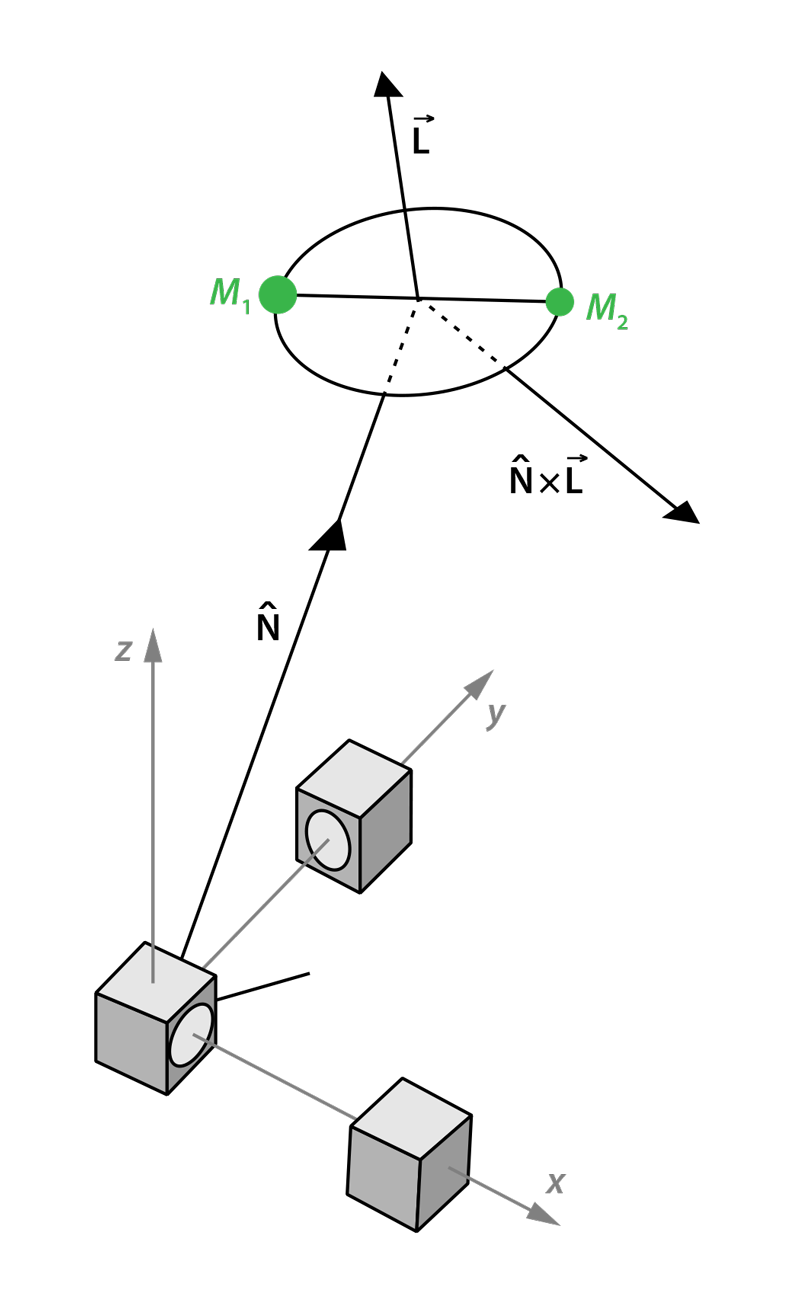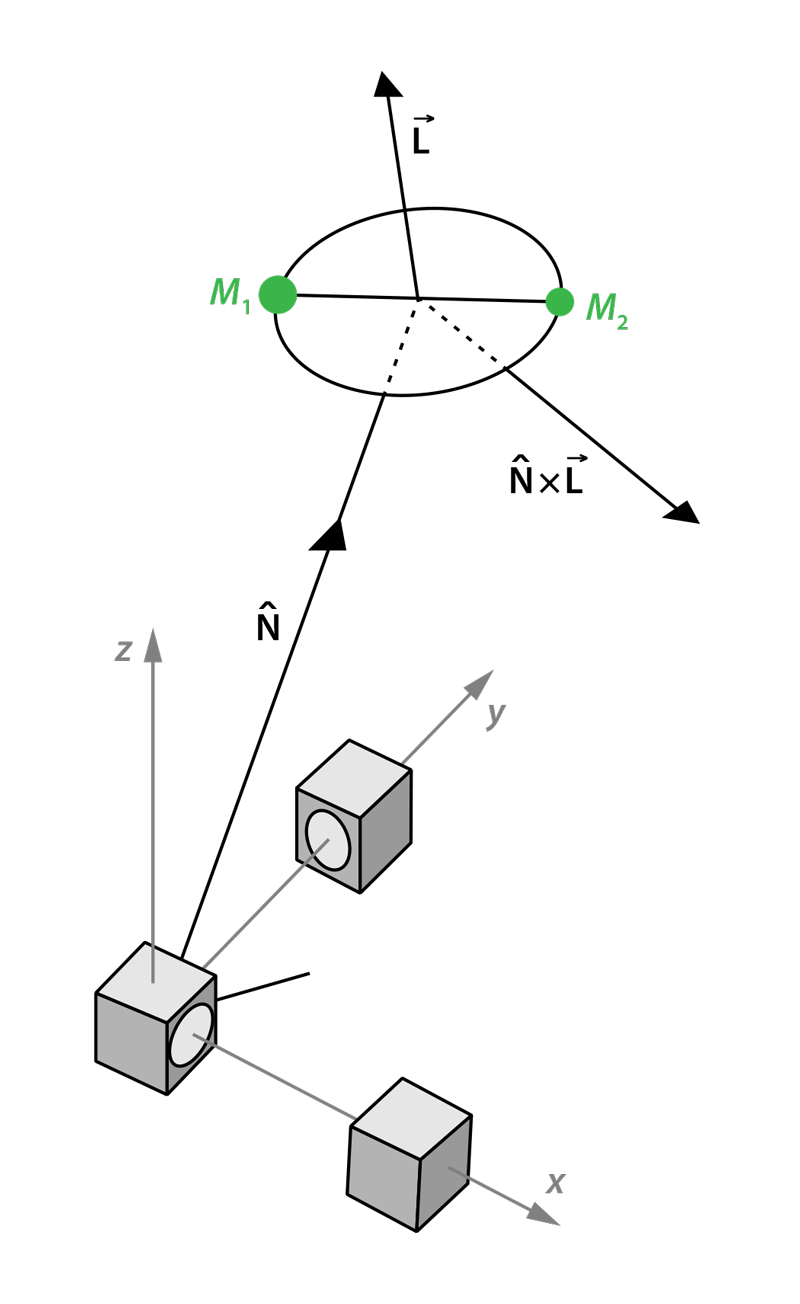50 Years of Physical Review D: Making Ripples in Fields and Spacetime
Fifty years have passed since the birth of Physical Review D, a journal dedicated to particles, fields, gravitation, and cosmology.
For the anniversary, we asked PRD’s editors to select three influential papers published in the journal that left profound impacts on their fields and that continue to shape exciting, cutting-edge research today. We spoke with some of the papers’ authors to hear how these monumental ideas came to light. For insights on how each paper’s influence has rippled out to the present day, we reached out to early-career scientists who now pursue questions made possible by the ideas that arose in these works.
This article is part of a series commemorating 50 years of research in four Physical Review journals. Read about the big ideas from Physical Review A (atomic and molecular physics, optics, and quantum information) now, and watch for articles about Physical Review B (condensed matter and materials) and Physical Review C (nuclear physics) later this year.
–Erika K. Carlson
1981: Inflation Changes Our View of the Universe
When cosmologists originally developed the big bang model—the idea that the Universe has been continuously expanding since some originating event—their theory didn’t describe what the Universe’s first moments were like. “It said nothing about what banged, why it banged, or what happened before it banged,” says Alan Guth, a physicist now at the Massachusetts Institute of Technology, Cambridge.
Guth came to develop a more detailed picture of the Universe’s earliest moments in the late 1970s. He and his colleague Henry Tye, both postdocs, theorized that there was a period of supercooling very early in the Universe’s history that reconciled grand unified theory predictions with the Universe’s apparent lack of magnetic monopoles. At Tye’s suggestion, Guth went on to consider how such a period of supercooling would have affected the Universe’s expansion. In December 1979, he figured out that this supercooling would trigger exponential expansion very early in the Universe. This period of rapid expansion came to be called inflation.
Guth soon realized that inflation would explain why the Universe has a flat, Euclidean geometry—a mystery then known as the flatness problem. The repulsive force responsible for inflation would naturally drive the Universe to an expansion rate that gives it this flat geometry. Later, he found that inflation would also solve a mystery known as the horizon problem: Why are distant parts of the Universe in thermal equilibrium when they are so far apart that not even light could carry information between them? With inflation in the picture, the entire observable Universe could have reached thermal equilibrium while it was still small and then expanded rapidly to its current state. In a 1981 paper, Guth described this inflationary model of the Universe and how it addresses both the flatness and horizon problems.
Now, inflation is accepted as a key element in the big bang model of cosmology. Since the 1981 paper, observations of the cosmic microwave background—radiation left over from the very early Universe—have revealed tiny fluctuations in the radiation that are consistent with inflation.
Though the mechanism behind inflation proposed in 1981 ultimately wasn’t quite viable, “the impact of that paper is truly immense,” says Marilena LoVerde of Stony Brook University, New York, who researches various topics in cosmology, including tests of inflationary models. “That paper provides the framework by which cosmologists continue to create and judge models of the early Universe.”
A. Guth, “Inflationary universe: A possible solution to the horizon and flatness problems,” Phys. Rev. D 23, 347 (1981).
1981: A “Seesaw Mechanism” for Understanding Neutrinos
When weak nuclear interactions produce neutrinos, the resultant neutrinos seem to always be “left-handed”—their spins point opposite to the direction the particle is moving and never forward, as “right-handed” spins would. Why wouldn’t weak nuclear interactions be left-right symmetric when other interactions—gravitational, electromagnetic, and strong nuclear—all have such symmetries? “Only weak interactions have this peculiar property,” says Rabindra Mohapatra of the University of Maryland, College Park. It vexed him that only left-handed neutrinos had ever been observed, he says, when he was studying weak interactions in the late 1970s at the City University of New York.
Mohapatra worked with his graduate student Goran Senjanović to develop a theory about neutrino properties that addressed the particles’ strange behavior with regard to left-right symmetry. The two first proposed their model in 1979 and further elaborated on the theory, with a detailed mathematical description, in a 1981 paper. Their model, which came to be called the seesaw mechanism, relates neutrinos’ miniscule masses to their left-handedness. Left-handed neutrinos are light, the model says, while right-handed neutrinos are heavy. This relationship explains why right-handed neutrinos have yet to be seen; their masses may be too high to be produced in existing colliders. The seesaw mechanism also extends to W bosons, which carry the weak nuclear force in the standard model, suggesting a WR partner to the familiar W boson.
Mohapatra and Senjanović’s work has inspired two main categories of experimental searches, Mohapatra says. One is the search for heavy, right-handed neutrinos and WR bosons, which is underway in multiple experiments at CERN’s Large Hadron Collider (LHC). Another quest is to observe a hypothesized nuclear reaction called neutrinoless double-beta decay, in which two neutrons decay into two protons and two electrons but don’t also produce two antineutrinos, as a typical double-beta decay reaction would. Mohapatra’s theory of left-right symmetry predicts that such decay reactions are possible.
“For me, the most exciting part of this paper is that it provides us a better understanding of the neutrino nature,” says Carolina Arbeláez, a physicist at Federico Santa María University in Chile. Arbeláez seeks to understand the physics of neutrinos through the experimental searches of the LHC. In recent work, she and colleagues have placed constraints on heavy mediator fields that could potentially generate the tiny masses of neutrinos through the seesaw mechanism based on searches for long-lived particles at the LHC.
R. Mohapatra and G. Senjanović, “Neutrino masses and mixings in gauge models with spontaneous parity violation,” Phys. Rev. D 23, 165 (1981).
1994: Orbital Precession and Gravitational Waves
Theocharis Apostolatos got into gravitational waves about 30 years ago, when the first detectors were being built. “I started working in the field in its initial phase, so there was plenty of room to do new things,” says Apostolatos, now at the National and Kapodistrian University of Athens. Apostolatos was a graduate student working with physicist Kip Thorne at the California Institute of Technology, Pasadena, when Thorne’s research group shifted from studying a broad range of topics in gravitation to focusing on gravitational waves.
At the suggestion of Curt Cutler, a postdoc at Caltech, Apostolatos started investigating how orbital precession would affect gravitational waves. He considered two spinning objects orbiting each other, such as rapidly rotating black holes in a binary system. If the objects have parallel spins, they will keep orbiting in the same plane. But if the two objects have spins that point in different directions, the orbital plane will start to precess because of a general relativistic effect called frame dragging. Apostolatos calculated and described the effects that precession would have on the gravitational waveform of a merging binary system in a 1994 paper he coauthored with Cutler.
Researchers have since included the effects of orbital precession in constructing “template” waveforms that are used for analyzing gravitational-wave signals. Accounting for the possibility of precession lets them extract more accurate information about the merging binaries. And spotting precession in gravitational waves may help researchers understand how the binaries formed—whether the two merging objects formed together as a binary system or came together later in a chance encounter. There hasn’t yet been a clear, unambiguous sign of precession in detections so far, but that’s likely only a matter of time, says astrophysicist Katerina Chatziioannou of the Flatiron Institute in New York.
A member of the LIGO Collaboration, Chatziioannou is one of many who have built on the work of Apostolatos and colleagues. Chatziioannou actually worked with Apostolatos when she was an undergraduate, but on an unrelated project; it wasn’t until later that she learned of the 1994 paper. Since the 1994 result, Chatziioannou and other researchers have relaxed some of the original work’s assumptions to develop a theoretical understanding of precession’s effects in a broader range of merging binary systems. “It’s spawned a lot of lines of research,” Chatziioannou says.
T. Apostolatos et al., “Spin-induced orbital precession and its modulation of the gravitational waveforms from merging binaries,” Phys. Rev. D 49, 6274 (1994).
–Erika K. Carlson is a Corresponding Editor for Physics based in Brooklyn, New York



